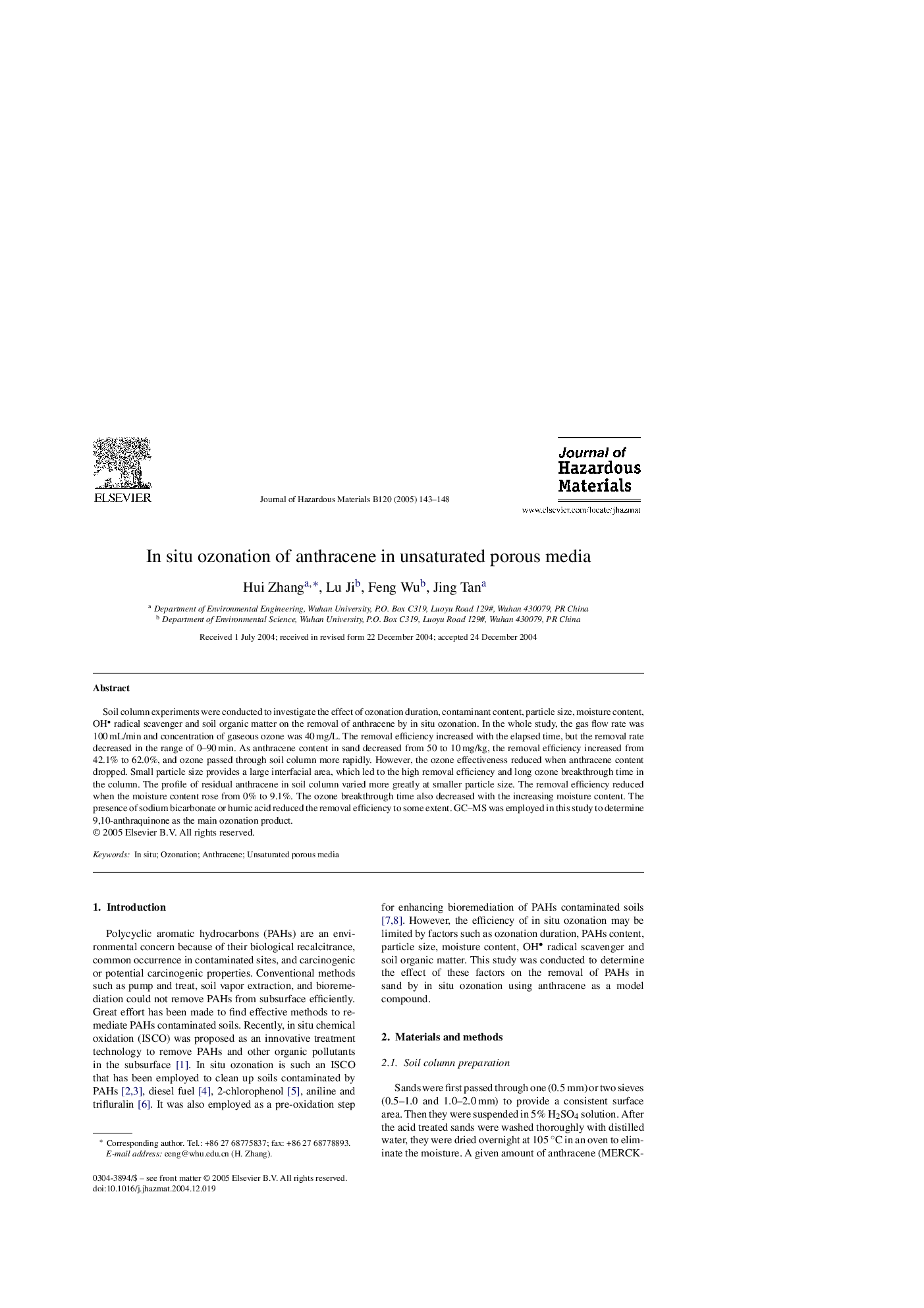| Article ID | Journal | Published Year | Pages | File Type |
|---|---|---|---|---|
| 9674312 | Journal of Hazardous Materials | 2005 | 6 Pages |
Abstract
Soil column experiments were conducted to investigate the effect of ozonation duration, contaminant content, particle size, moisture content, OH radical scavenger and soil organic matter on the removal of anthracene by in situ ozonation. In the whole study, the gas flow rate was 100Â mL/min and concentration of gaseous ozone was 40Â mg/L. The removal efficiency increased with the elapsed time, but the removal rate decreased in the range of 0-90Â min. As anthracene content in sand decreased from 50 to 10Â mg/kg, the removal efficiency increased from 42.1% to 62.0%, and ozone passed through soil column more rapidly. However, the ozone effectiveness reduced when anthracene content dropped. Small particle size provides a large interfacial area, which led to the high removal efficiency and long ozone breakthrough time in the column. The profile of residual anthracene in soil column varied more greatly at smaller particle size. The removal efficiency reduced when the moisture content rose from 0% to 9.1%. The ozone breakthrough time also decreased with the increasing moisture content. The presence of sodium bicarbonate or humic acid reduced the removal efficiency to some extent. GC-MS was employed in this study to determine 9,10-anthraquinone as the main ozonation product.
Related Topics
Physical Sciences and Engineering
Chemical Engineering
Chemical Health and Safety
Authors
Hui Zhang, Lu Ji, Feng Wu, Jing Tan,
